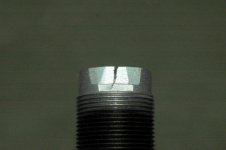Good replies in this thread, and plenty more in the many other threads discussing this very issue. Suggest a search.
Bottom line: you're likely safe shooting any common .357 load you like; you're probably especially in the clear if you keep it 140 grain and above.
My understanding is that the 125 grain "hot" loads of today are pale compared to their counterparts from 50 years ago when the forcing cone problems started cropping up and, and that those problems were largely associated with especially hot Treasury loads that briefly became popular in law enforcement circles, and are now long gone.
Bottom line: you're likely safe shooting any common .357 load you like; you're probably especially in the clear if you keep it 140 grain and above.
My understanding is that the 125 grain "hot" loads of today are pale compared to their counterparts from 50 years ago when the forcing cone problems started cropping up and, and that those problems were largely associated with especially hot Treasury loads that briefly became popular in law enforcement circles, and are now long gone.






